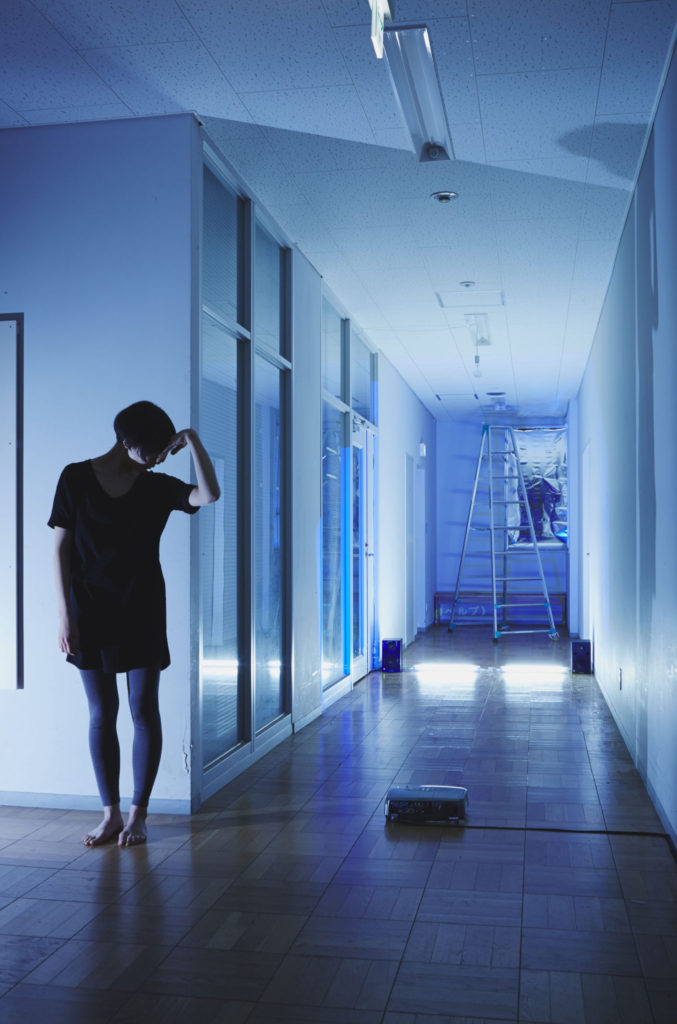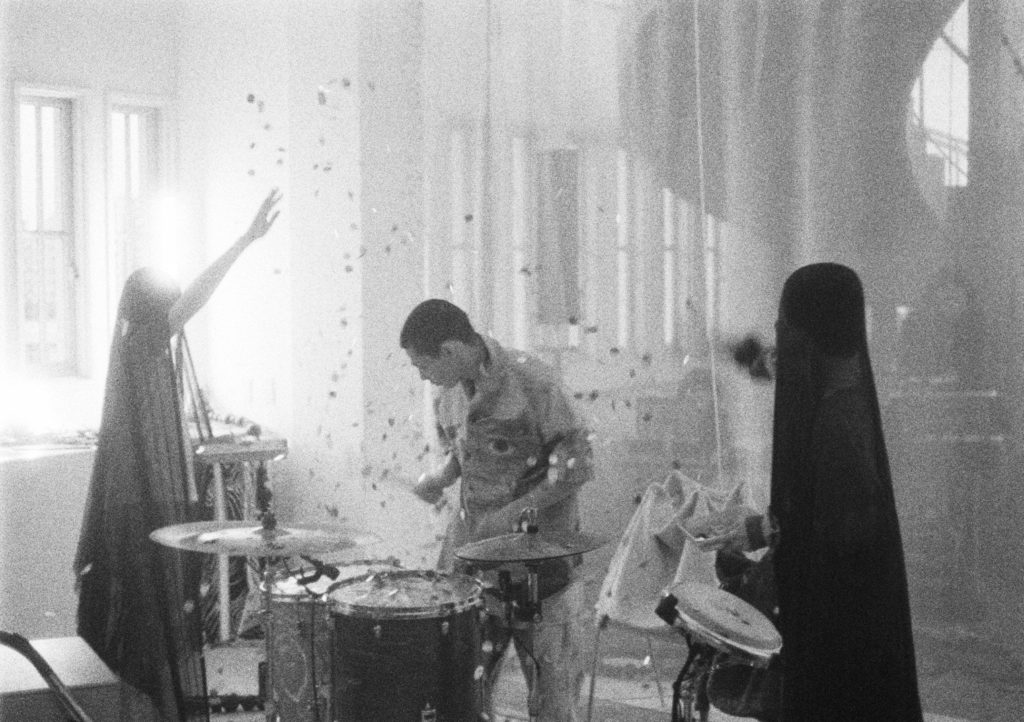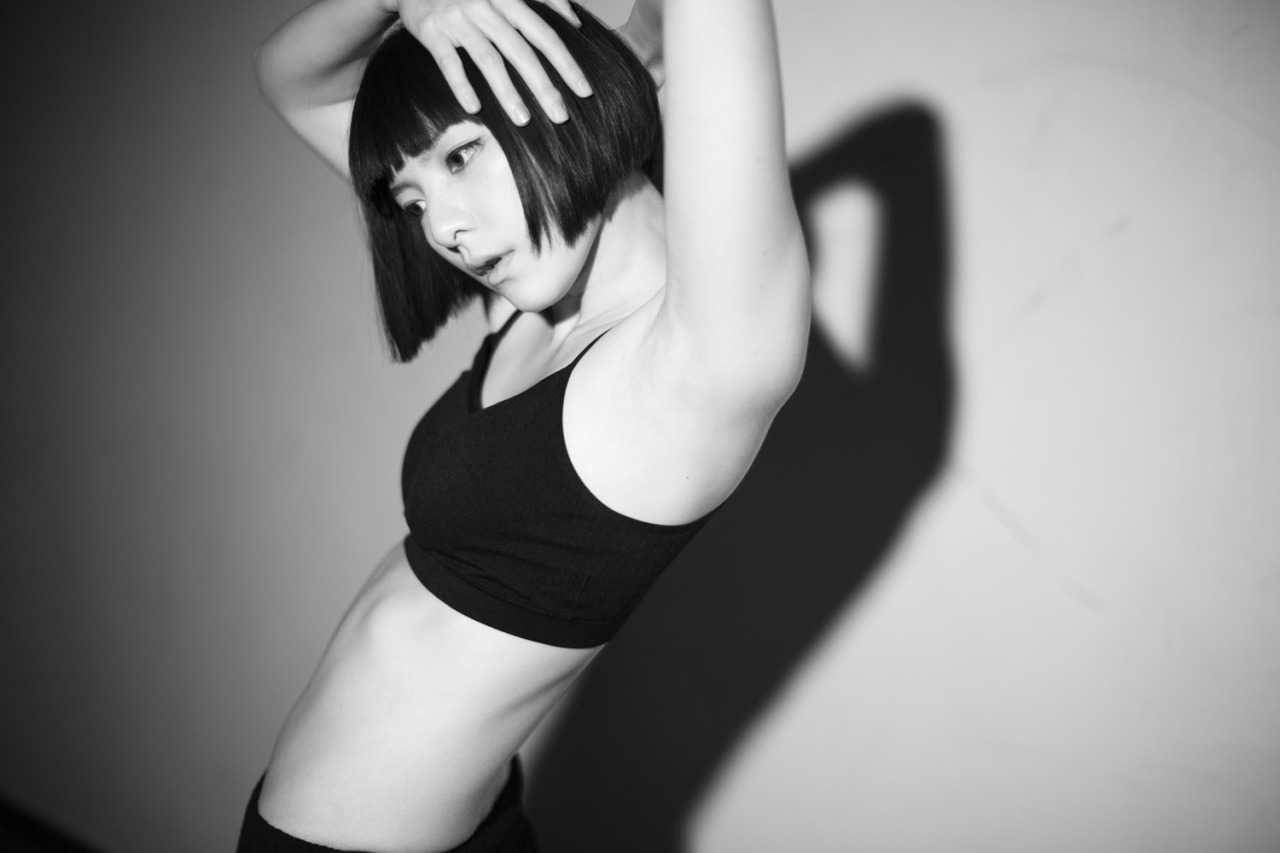Runs an advertisement production company, while also being active as a writer and interviewer in the fields of music, cinema and dance. He is the director of “LAND FES,” an event revolving around improvised sessions with dancers and musicians while wandering through the streets, and is involved in the planning and implementation of workshops and other events for handicapped children.
photo by Sylvia Steinhäuser
An end of the corona crisis is still way out of sight, and as countries around the globe are struggling to cope with this unprecedented situation, most artists experience significant restrictions on their activities. This affects especially dancers, who literally depend on nothing but their bodies and physical interaction with their audiences. How are they seeing things right now, and where do they seek to find clues for rebooting their work? Saori Hala, a Berlin-based dancer who continues to operate between Japan and Germany, looks into how both countries have been dealing with the coronavirus as a new part of our daily routine.
Japanese vagueness vs. German clarity – different circumstances for artists to unite
On March 15, 2020, Saori Hala did a performance in a town in Austria. On the very next day, virtually all European countries began to close their borders. Hala just somehow managed to get back home to Berlin, where she was then forced to call off rehearsals and performances for the time being. She subsequently also had to decide whether or not to cancel a planned event in Japan that was going to be rather meaningful for her.
The performance of “Da Dad Dada” in Japan was scheduled for late June. The piece is a self-documentary about my separation from, and reunion with, my late father and dancer, Ken Hara. As the choreography includes a scene related to the 1964 Tokyo Olympics, the idea was to stage the piece shortly before the start of the Olympic Games in 2020. But once it began to look as if the games were going to be postponed, I reacted by immediately postponing the performance as well. I thought it made no sense to keep waiting for the government’s decision, and I didn’t want my work and my team to be swayed by it. That was around March 20, a week or so before they started officially canceling or postponing events in Japan on a large scale. I did think about the risks and possibilities in the event that people actually come to see the performance at that point, but one big factor was the fact that I felt uncomfortable being at the mercy of the Japanese (government’s) response and their vague criteria.
Looking at the situation in Japan, where the government’s consistently irresolute response put the responsibility for events into the hands of organizers and artists, Hala didn’t feel like “entering that arena.” Meanwhile in Germany, the government swiftly set up clear guidelines, and assistance to artists was offered early on.
Here (in Berlin), they were certainly quick to support artists. I’m only familiar with the situation in Berlin though, and it was probably different in other parts of Germany. The speedy response made me feel of course the government’s esteem of culture, but I also think it might have been a measure designed to help keep the virus from spreading. The Germans like to do flash demos where the situation in the streets can easily get out of control, so also in this respect it’s quite the opposite of Japan, where people tend to keep quiet and endure.
Artists were also very quick to launch petitions. Many of them are normally operating independently, doing alternative and somewhat self-centered solo work, but when it comes to engaging in this kind of social activity, they are always fast to jump in and hook up. I guess that’s because they have that shared foundation, which their ideas of how dancers and other artists want to and are supposed to act in society are based on. “Artists naturally have a right for compensation, and for that we naturally work together regardless of position.” This seems to be the consensus, and this can always be felt.
Again, it is completely different in Japan. Even though dancers do treasure solidarity and community among companies and groups, and even though that often takes creative work to world-class levels, I feel that there is no real connection between them when it comes to social activities. While the idea of “artists working individually, but being connected as a community” is quite common and well-functioning in Germany, an artist doing solo work in Japan tends to be associated with a “lone wolf” kind of attitude. As Japan is an important base for myself and my work, I am painfully aware of the differences regarding the situations in each country, whereas I think that the lack of the understanding that “dance and artistic work are social activities,” is a major obstacle in the endeavors of artists. Rather than saying one is good and the other is bad, it’s perhaps more a matter of evaluation.

The Choreography for W1847mm x D10899mm x H2812mm (2015) photo by Kaita Otome
The meaning of addressing assets of the past amidst a flood of information on the Internet.
In times when dance performances in real, physical spaces are subject to restrictions, a growing number of dancers use the Internet for streaming performances in small spaces without audience, making available archive material, hosting workshops, or other autonomous activities. Considering that she did her own online workshops and other things during the “stay home” weeks, how is Saori Hala perceiving this trend?
Up to now, I used to think of a performance as a creative way of dealing with “boundaries” – between “Hare (sacred) and Ke (secular)”, “private and public”, “performer and spectator”, or “stage and audience” for example. However, as the spread of Covid-19 has resulted in an increase of online contents, it seems to me that various boundaries of such kind have melted away. Frankly speaking, this doesn’t sit right with me. It feels weird, even threatening to me.
As a result of the spread of Covid-19, as a dancer I attended of course online classes and lectures myself, and I also had some opportunities to give workshops. It was definitely hard in the beginning. For me personally, just the fact that myself and my students got to see each other’s rooms although we had never actually met, was quite an energy-sapping experience. I still prefer doing these things from my atelier even now. With such defense of my personal environment firmly in place, I have come to see that exploration of new forms of communication and artistic expression as a very rewarding experience that involves all kinds of new discoveries. This abnormal situation affects of course not only my communication related to education and research, but it has also sneaked into the routine of my creative work itself.
One thing that I used to have in mind was to cross all kinds of “boundaries” through my works and creation processes. It might sound a bit abstract, but there were things that I found out in the moments those “boundaries” disappeared, imposing on myself the role of the performer who goes from one side to the other and back, or inspiring choreographies in which the ordinary and the extraordinary are nested within one another. And now I’m here, trying to recapture all those “boundaries.” It’s very strange indeed, but even though my goal seems reversed, I believe that I should keep following my nose.
Rather than having “melted,” the “boundaries” began to look to me as if they had just “moved” somewhere else, and at this point I am trying to locate them. This trial-and-error operation itself is likely to affect my future work, and it might as well turn into a concept.
Performance artists are forced out of the theaters, and restricted in their interaction with other people. While many of them turn to the Internet looking for hints as to how to navigate through this critical situation, Saori Hala chose to turn back to the 1970s, and look at works made during that period.
Especially in the USA in the 1960s-70s, the challenge how to present dance in settings other than theater stages was a subject that many dance artists tackled in their works, and a lot of the results are truly exciting also from today’s point of view. Trisha Brown’s “Roof Piece” is one of the more famous among them. Trisha launched her dance company in the ‘70s, and staged various site-specific performances at all sorts of places other than theaters. It occurred to me that I should revisit some of the many examples that were set around that time, and study them exhaustively.
The situation today is different, but just like dancers were back then, we are in a sense once again deprived of – or ejected from – the stages that theaters provide. In addition, we are facing the need to design new kinds of relationships between the viewer and the viewed. Thinking about how to deal with these issues that I am confronted with, it appeared to me that there may in fact be quite a variety of possibilities.
Considerations regarding what artists did, and how they went on to communicate their ideas after moving away from the theater stages in the 1960s-70s, have always been in my head in the form of knowledge or admiration for my predecessors. It’s a movement represented by the likes of Yvonne Rainer, Trisha Brown, or the Judson Dance Theater, which is so unrelated to the time and place of my own work that, frankly speaking, I’ve been looking at it merely as something that was cool as a style or a statement. However, now that we are in this situation, I finally realized how concretely it connects with myself and my own time. My attitude has changed, also in terms of how to look at works from a viewpoint beyond textbooks and studies. My plan is to review the history of dance and how it developed in this respect, and project my findings back onto my own creative work.

no room (2019) photo by Kazuhei Kimura
Discussing strategies for restoring the lost reality and physical nature of her trade, Hala made the rather unusual discovery of the radio as a medium for her continued efforts communicating her intent as a dancer. Stating about Radio Togenkyo that she “had the idea late last year, and launched it in February, so corona didn’t play a role,” the Internet radio station that she now runs together with Momoko Shiraga has been featuring various leading Japanese contemporary dancers, and the response has been great so far.
I have always been interested in the verbal accounts of dancers, so that was part of my motivation personally. The voices of dancers from different generations and scenes are far away and difficult to listen to directly, and as I am not a famous dancer myself, the established media aren’t a vehicle for me. A medium that is not overambitious but open to all was what I was looking for, so I created one myself. The slogan was to establish “a free medium about dancers, for dancers, by dancers.”
Back to the topic of “boundaries” once again, the radio station that I’ve been doing during the corona crisis inspired me to focus on “the voice and the body.” The voice is a formless physical medium without a concrete image attached to a concrete person, like in a movie or a photograph, and it is free to go anywhere, and cling to whatever space it lands in. The relationship between words and body originally was one of the main themes of my work, and right now I’m doing research into voice instruction and the corresponding movements it triggers. This was somewhat unexpected as a discovery and development for myself.
Radio Togenkyo, however, is a totally easygoing vehicle for me to talk about anything that crosses my mind. I hope I’ll be able to continue to do so, peacefully and bit by bit, together with my partner Momoko Shiraga.
Past programs can be accessed via the Radio Togenkyo archive: https://www.radio-togenkyo.com
*This text was edited based on an interview conducted by LAND FES PLUS (landfes.com) on May 29, 2020.
Translated by Andreas Stuhlmann
Saori Hala
Dancer, artist, based in Berlin since 2012. Her work revolves around performances using her own body to explore ways of physical existence in site-specific spatial/temporal settings, and also includes the creation of related texts and drawings. In recent years, ”Da Dad Dada,” a self-documentary style work about her separation from and reunion with her late father, a dancer himself, was unveiled in Japan and Germany. In the fall of 2019, she showed the site-specific performance “no room” at Dance New Air, the largest dance festival in Japan.
Making use of her body’s features that combine the appearance of a still life and the vibrancy of an animal, she has been appearing in numerous live performances, music videos and TV programs, and continues to expand the scope of her activity.
Graduated in design MA from the Tokyo University of the Art (2015), and in solo/dance/authorship MA from HZT (UdK), Berlin (2018).
Received funding from Yoshino Gypsum Foundation (2013), Pola Arts Foundation (2017), and Arts Commission Yokohama (2020).









